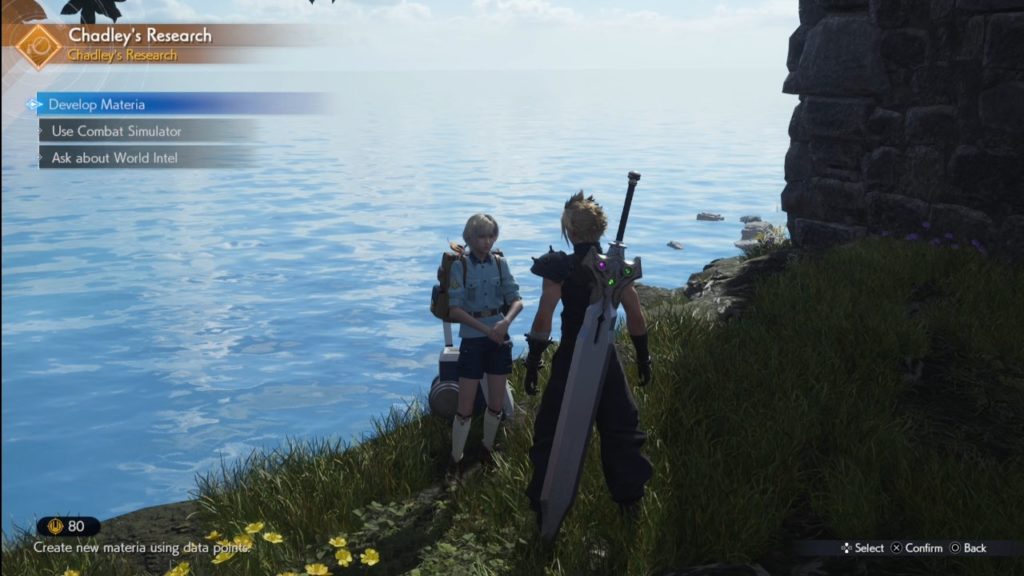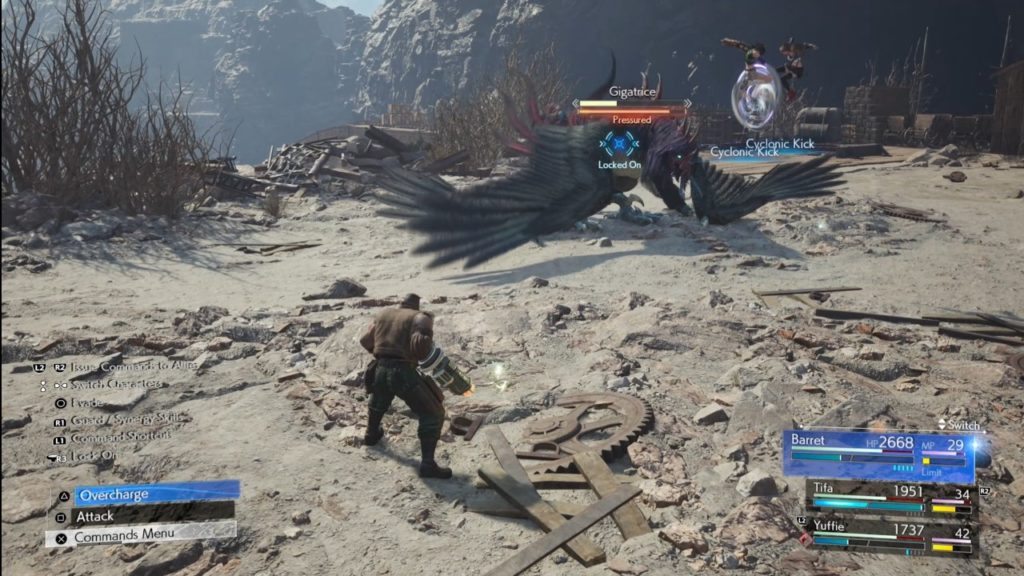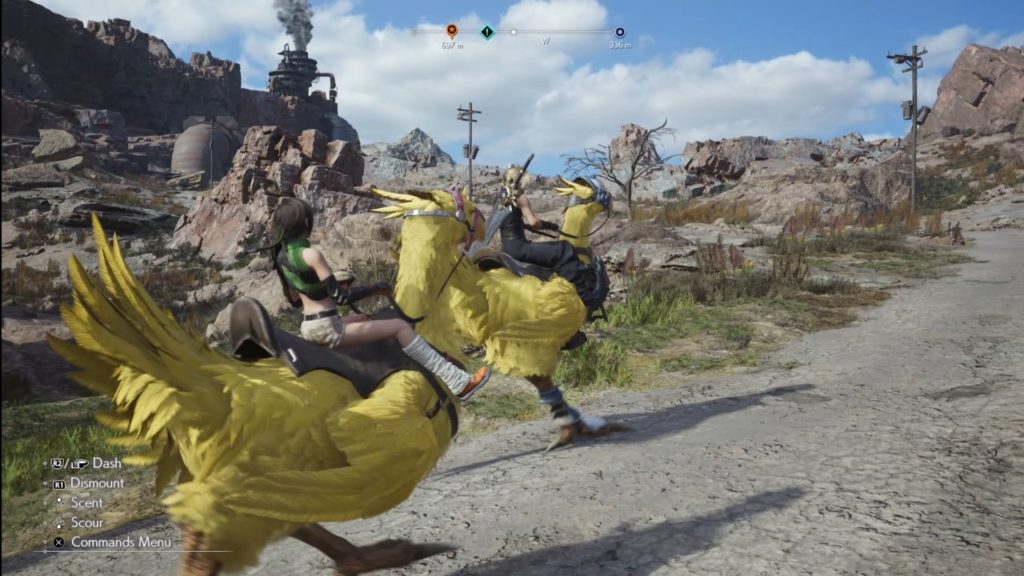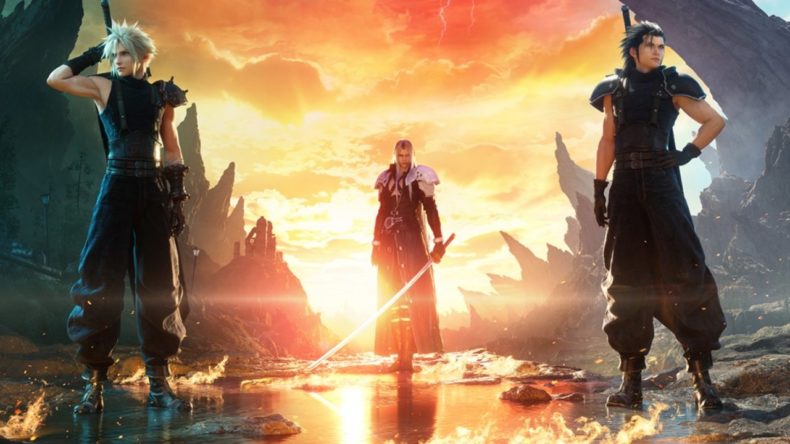February 29, 2024
When the credits rolled on Final Fantasy VII Remake I, like many people, was left wondering where the hell Square-Enix were planning to take the story. 40-odd hours of Final Fantasy VII Rebirth later, and I’m still not entirely sure. The end of the first part of this huge AAA remake left me scratching my head, yet impressed by the writers’ moxy, and well, history repeats. But that’s not to say nothing happened in Rebirth. Hell, so much happened in Rebirth it’s hard to go back through it in my mind and recall it all. Yet Rebirth is the middle chapter, the difficult second book, the exposed midriff of the new trilogy, and never is that felt more keenly than at the end.
Though this is a spoiler-free review, so I’m not going into detail here. What I can tell you is that the story picks up directly after the end of Remake, right there on the freeway, and immediately takes steps to subvert expectations. And what follows is an epic open world adventure that takes our beleaguered heroes all over the planet, from Midgar to Mt Corel. Those who played the original will follow the story beats and locations, and there are familiar characters introduced along the way, but this is a tricky story to predict.

It’s structured like a fairly standard open-world game. Each new location begins with a narrow focus that opens up into a vast area with a sprawling map filled with icons and places of interest. But it’s not a dull checkbox, either – there are multiple activities to pursue, including special shrines that can bolster your knowledge of various Summons, making them weaker when you face them in Chadley’s simulator. There are multi-path sidequests, Chocobo ranches where you can get yourself a summonable mount, and special areas where you must take on unique versions of standard enemies.
Square-Enix has taken some solid lessons from Remake where the side content is concerned, too. The sidequests here don’t feel like filler; they have their own fleshed-out stories, and can take you across the whole area in pursuit of treasure or to help out new and returning characters. There are hidden chests holding gear, consumables, and weaponry, and, of course, towers that you can activate to populate your map. It helps that the open world is gorgeous, with diverse locations brimming with personality. In fact, there are moments where these areas so perfectly evoke the original that they feel instantly familiar despite their size and breadth.

Which is not to say that Rebirth is without its share of filler. A couple of fairly early chapters push their luck just a little in terms of their content and its overall connection to the story, but I couldn’t help but be reminded of Like A Dragon: Infinite Wealth at times. There’s a sense of joy in a lot of Final Fantasy VII Rebirth’s less story-crucial moments that I wasn’t expecting, and some of these moments feel like they were purpose-built to make the fans smile.
Where Final Fantasy VII Rebirth could divide opinion is in its open world. If you’re up for exploration and adventure in between all this saving the world malarkey, you’re in luck, but there will be those who’d rather just get on with the story. If you thought Remake had a little too much side content, well, I’d buckle up for Rebirth if I were you.
What Rebirth does even better than Remake, though, is deliver its story beats with undeniable spectacle. Remake had its big moments, for sure, but Rebirth is on another level at times. There are emotional components here that I just wasn’t expecting, even knowing some of the darker places the story goes to, and I found myself gasping more than once during some of the cutscenes. Cloud in particular feels more fleshed-out here, but several characters get a chance to explore their own troubled pasts. Cloud’s history, though, is central, and Sephiroth’s presence looms ever larger as the story progresses. He’s truly one of the most iconic video game villains for a reason, and his representation here, as in Remake, is flawless.

Story aside, I also did my fair share of gasping during the combat. Managing a step up from the last game was never going to be easy, but Rebirth does it. Combat feels familiar yet a little more nuanced, as you execute incredible Synergy attacks that combine the characters of your party in synchronised assaults that also convey buffs. They’re unlocked in your Folio, a book of skills and stat boosts that each character has, unlocked by spending your SP.
New characters join the line-up here, too. Yuffie we’ve met before in Final Fantasy VII Remake: Intergrade, but we also welcome Cait Sith to the group in Rebirth. Happily, both new characters slot right into the squad as though they’ve always been there, bringing their own Synergy Attacks and special abilities. There are still a few notable absences, and even though Square-Enix have been quite upfront about who and why, it’s still a little disappointing.
The screen-filling Summons return, imbuing the larger fights with even more grandiosity, each one a genuine showstopper. Add these eye-watering visual feasts to the Synergies, spells, and sweeping cinematic camera work and anything above a grunt fight becomes a staggeringly good-looking affair. And then of course there are those tiny soundbites between characters, Cloud confirming that “I got it from here!” when you switch to him, or Red XIII (now fully playable) destroying his enemy with grace and respect.
Dialogue is a step up. In fact, the writing in general is. There’s so much character stuff at work here, not just between the protagonists, but involving their backstories and past lives, that it’s impossible not to get invested in their plight. Anytime there’s a dip in the pacing, Square-Enix wrestles it back with something genuinely surprising. And for those who’d rather get invested in the world at large, there are minigames such as card-collector Queen’s Blood, and later on a whole area dedicated to other minigames and simulations, which I certainly won’t spoil.
Old friends, new enemies, surprising encounters, and powerful clashes escalate at a rate of knots in the final third of the game, but it rarely goes any length of time without a “wow” moment. Without a doubt, Final Fantasy VII Rebirth is a phenomenally good video game. It has a habit for self-indulgence that some might find a little grating, but it earns every pause or reflection with some truly spectacular set-pieces, occasional shocking story moments, and some of the best combat I’ve experienced. The next four years are going to feel like a lifetime.
Spectacular Combat
Compelling open world
Amazing soundtrack
Some incredible character moments
Some pacing issues
Final Fantasy VII: Rebirth is a phenomenally good video game. It has a habit for self-indulgence, but earns every pause with some shocking story moments, and some of the best combat I’ve experienced.





